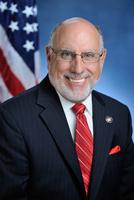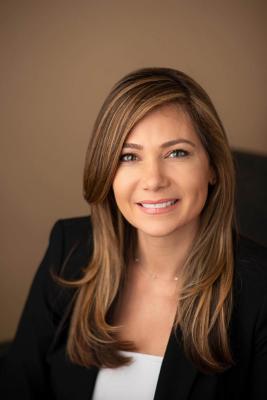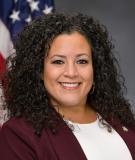About these crash totals
Counts come from NYC police crash reports (NYC Open Data). We sum all crashes, injuries, and deaths for this area across the selected time window shown on the card. Injury severity follows the official definitions in the NYPD dataset.
- Crashes: number of police‑reported collisions (all road users).
- All injuries: total injured people in those crashes.
- Moderate / Serious: subcategories reported by officers (e.g., broken bones vs. life‑threatening trauma).
- Deaths: people who died due to a crash.
Notes: Police reports can be corrected after initial publication. Minor incidents without a police report are not included.
Close▸ Killed 3
▸ Amputation 1
▸ Severe Bleeding 2
▸ Severe Lacerations 1
▸ Concussion 2
▸ Whiplash 33
▸ Contusion/Bruise 14
▸ Abrasion 7
▸ Pain/Nausea 4
About this chart
We group pedestrian injuries and deaths by the vehicle type that struck them (as recorded in police reports). Use the dropdown to view totals, serious injuries, or deaths.
- Trucks/Buses, SUVs/Cars, Mopeds, and Bikes reflect the reporting categories in the crash dataset.
- Counts include people on foot only; crashes with no injured pedestrians are not shown here.
Notes: Police classification can change during investigations. Small categories may have year-to-year variance.
CloseTwo young riders dead on the Bronx River Parkway. Night after night, the parkways bleed.
Pelham Bay Park: Jan 1, 2022 - Aug 25, 2025
Two men died before dawn on the Bronx River Parkway. Police say a 21‑year‑old in a Mercedes tried to pass, hit a car, then struck two bikes. The riders were thrown onto the road and died at hospitals. Their names: Manuel Amarantepenalo, 19, and Enrique Martinez, 21. The driver was charged with vehicular manslaughter and DWI. He refused a chemical test. The southbound lanes closed for hours near Gun Hill.
“Two people were killed. He was drunk,” said a sister at court. “Think about how he took two lives.” The lawyer said his client will contest the charges. Police and prosecutors laid out the basics. Family members asked why he walked free after arraignment.
The morning rush crept past flares and wrecked metal. Another night. Another stretch of Bronx parkway sealed with tape.
The parkways don’t forgive
This corner of the Bronx is carved by fast roads. The dead pile up on the big names. In the last three years, the worst injury clusters sit on the Bruckner Expressway and the Hutchinson River Parkway. Pelham Parkway shows death too.
Night is cruel here. Injuries spike after dark. The heaviest hours run from midnight to 3 a.m., then again from late afternoon into night, with deaths marked at 4 a.m., 4 p.m., and 9 p.m. The data call it out: nighttime conditions.
On these roads, most victims sit inside vehicles. But people outside are not spared. In this zone since 2022: seven cyclists hurt, seven pedestrians hurt, one pedestrian seriously.
Patterns you can touch
City data tags the usual sins: distraction, tailgating, improper passing. “Other” fills many reports. One crash on the Hutch last winter killed a woman and injured a 14‑year‑old in a chain of cars and trucks on slick pavement. Another on Pelham Parkway killed a driver at night. A summer left turn at Bruckner and Pelham ended with a motorcyclist ejected and dead.
Trucks and SUVs are in the mix on every artery. Rear‑ends. Unsafe turns. Speed.
What this neighborhood needs now
Cut the speed where people live and cross. Daylight the turns. Harden them. Give slow‑to‑start signals at Pelham Parkway and the service roads. Target late‑night speeding on the Hutch, the Bruckner, and the Bronx River Parkway.
Then do the citywide work we already know saves lives. Lower the default speed limit on residential streets. Albany gave the city that power. Use it. Force the worst repeat speeders to slow down with intelligent speed assistance after a pattern of tickets or points. State lawmakers advanced that bill this session.
Leaders have the tools. Use them or explain the next obituary to a mother at 2 a.m.
What you can do
Tell City Hall and Albany to slow the cars and stop repeat offenders. Start here: take action.
Citations
▸ Citations
- Drunk Driver Kills Two Bronx Motorcyclists, Gothamist, Published 2025-08-12
- Bronx Parkway Crash Kills Two Riders, NY Daily News, Published 2025-08-12
- Motor Vehicle Collisions – Crashes (Pelham Bay Park area) - Persons, Vehicles , NYC Open Data, Accessed 2025-08-25
- File S 4045, Open States, Published 2025-06-11
- StreetsPAC Ranks Lander #1 for Mayor, Offers Other Picks for Comptroller, Beeps and Council, Streetsblog NYC, Published 2025-06-11
- Congestion Pricing Is Happening: Cue the Irrational Drama from the Placard Elite and the Suburbs, Streetsblog NYC, Published 2025-01-03
- Scooter Riders Killed On Bronx Parkway, CBS New York, Published 2025-08-11
- Two Moped Riders Killed On Parkway, Gothamist, Published 2025-08-11
Other Representatives

District 82
3602 E. Tremont Ave. Suite 201, Bronx, NY 10465
Room 836, Legislative Office Building, Albany, NY 12248

District 13
1925 Williamsbridge Rd-Flr 2, Bronx, NY 10461
718-931-1721
250 Broadway, Suite 1554, New York, NY 10007
212-788-7375

District 34
3853 E. Tremont Ave., Bronx, NY 10465
Room 814, Legislative Office Building 188 State St., Albany, NY 12247
▸ Other Geographies
Pelham Bay Park Pelham Bay Park sits in Bronx, Precinct 45, District 13, AD 82, SD 34, Bronx CB28.
▸ See also
Traffic Safety Timeline for Pelham Bay Park
5
Marmorato Warns Congestion Pricing Raises Costs and Gridlock▸Jan 5 - Businesses in Manhattan’s toll zone pass new $9 congestion fee to customers. Councilman Holden calls it a scam tax. Residents pay even if they don’t drive. Gridlock grows near the border. Critics warn of rising costs and slower emergency response.
On January 5, 2025, New York City began enforcing congestion pricing below 60th Street, charging drivers $9 during peak hours. The measure, discussed in the article 'NYC residents slapped with congestion pricing ‘surcharge’ by fed-up companies paying new toll: ‘Hochul inflation’,' has sparked backlash. Queens Councilman Robert F. Holden, representing District 30, condemned the move, stating, 'It’s no surprise that businesses will pass the Congestion Scam Tax on to consumers.' Companies like CompuVoip and Dream Events & Decor now add surcharges for customers in the zone. Holden’s criticism joins that of Bronx Councilwoman Kristy Marmorato and others, who warn of higher costs and increased gridlock. Emergency unions claim response times will suffer. The bill’s impact on vulnerable road users was not assessed.
-
NYC residents slapped with congestion pricing ‘surcharge’ by fed-up companies paying new toll: ‘Hochul inflation’,
nypost.com,
Published 2025-01-05
3
Marmorato Criticizes Congestion Pricing Cash Grab Impacting Commuters▸Jan 3 - Congestion pricing hits Manhattan at midnight. Cars pay to cross south of 60th. Lawmakers split. Some call it a burden. Others hail cleaner air, safer streets, and better transit. The toll stirs anger, hope, and a fight over who pays and who breathes.
On January 3, 2025, congestion pricing (no bill number cited) will begin in Manhattan after a federal judge allowed the toll to proceed. The policy charges most drivers $9 to enter south of 60th Street during peak hours. The matter, titled 'Congestion pricing set to begin at midnight Sunday as federal judge clears path for Manhattan toll,' has drawn sharp lines. Council Member Robert F. Holden (District 30, Queens) opposes the toll, warning, 'I don't know how my district is going to be impacted.' He fears more cars parking in Queens and unclear pollution risks. Council Member Kristy Marmorato (Bronx) calls it a 'cash grab.' In contrast, State Sen. Kristen Gonzalez and Assembly Member Jessica González-Rojas support the measure, citing cleaner air, safer streets, and transit upgrades. González-Rojas says, 'Congestion pricing isn't about penalizing anyone—it's about modernizing our transportation system and tackling climate change.' The judge ordered further study on environmental impacts, but the toll begins as scheduled.
-
Congestion pricing set to begin at midnight Sunday as federal judge clears path for Manhattan toll,
amny.com,
Published 2025-01-03
3
Marmorato Opposes Safety‑Boosting Congestion Pricing Cash Grab▸Jan 3 - As congestion pricing begins, unions and politicians rage. They claim tolls hurt workers and raise costs. Facts show most commuters use transit. Fewer cars mean faster emergency response. The toll funds transit upgrades. The drama masks real safety gains for all.
On January 3, 2025, public debate erupted as New York City prepared to activate congestion pricing in Manhattan. The measure, set to fund $15 billion in subway and rail improvements, drew fierce opposition from unions and Councilwoman Kristy Marmorato, who called it a 'cash grab' that would 'increase all costs in our daily lives.' The union for FDNY EMTs argued the toll would burden low-wage workers, but data shows 90% of commuters already use public transit. City officials, including mayoral spokesperson Liz Garcia, insisted emergency response would not suffer. The measure's summary notes that reducing car traffic will speed up emergency vehicles and protect passengers. The uproar highlights the tension between entrenched driving privileges and the urgent need to make streets safer for vulnerable road users.
-
Congestion Pricing Is Happening: Cue the Irrational Drama from the Placard Elite and the Suburbs,
Streetsblog NYC,
Published 2025-01-03
Jan 5 - Businesses in Manhattan’s toll zone pass new $9 congestion fee to customers. Councilman Holden calls it a scam tax. Residents pay even if they don’t drive. Gridlock grows near the border. Critics warn of rising costs and slower emergency response.
On January 5, 2025, New York City began enforcing congestion pricing below 60th Street, charging drivers $9 during peak hours. The measure, discussed in the article 'NYC residents slapped with congestion pricing ‘surcharge’ by fed-up companies paying new toll: ‘Hochul inflation’,' has sparked backlash. Queens Councilman Robert F. Holden, representing District 30, condemned the move, stating, 'It’s no surprise that businesses will pass the Congestion Scam Tax on to consumers.' Companies like CompuVoip and Dream Events & Decor now add surcharges for customers in the zone. Holden’s criticism joins that of Bronx Councilwoman Kristy Marmorato and others, who warn of higher costs and increased gridlock. Emergency unions claim response times will suffer. The bill’s impact on vulnerable road users was not assessed.
- NYC residents slapped with congestion pricing ‘surcharge’ by fed-up companies paying new toll: ‘Hochul inflation’, nypost.com, Published 2025-01-05
3
Marmorato Criticizes Congestion Pricing Cash Grab Impacting Commuters▸Jan 3 - Congestion pricing hits Manhattan at midnight. Cars pay to cross south of 60th. Lawmakers split. Some call it a burden. Others hail cleaner air, safer streets, and better transit. The toll stirs anger, hope, and a fight over who pays and who breathes.
On January 3, 2025, congestion pricing (no bill number cited) will begin in Manhattan after a federal judge allowed the toll to proceed. The policy charges most drivers $9 to enter south of 60th Street during peak hours. The matter, titled 'Congestion pricing set to begin at midnight Sunday as federal judge clears path for Manhattan toll,' has drawn sharp lines. Council Member Robert F. Holden (District 30, Queens) opposes the toll, warning, 'I don't know how my district is going to be impacted.' He fears more cars parking in Queens and unclear pollution risks. Council Member Kristy Marmorato (Bronx) calls it a 'cash grab.' In contrast, State Sen. Kristen Gonzalez and Assembly Member Jessica González-Rojas support the measure, citing cleaner air, safer streets, and transit upgrades. González-Rojas says, 'Congestion pricing isn't about penalizing anyone—it's about modernizing our transportation system and tackling climate change.' The judge ordered further study on environmental impacts, but the toll begins as scheduled.
-
Congestion pricing set to begin at midnight Sunday as federal judge clears path for Manhattan toll,
amny.com,
Published 2025-01-03
3
Marmorato Opposes Safety‑Boosting Congestion Pricing Cash Grab▸Jan 3 - As congestion pricing begins, unions and politicians rage. They claim tolls hurt workers and raise costs. Facts show most commuters use transit. Fewer cars mean faster emergency response. The toll funds transit upgrades. The drama masks real safety gains for all.
On January 3, 2025, public debate erupted as New York City prepared to activate congestion pricing in Manhattan. The measure, set to fund $15 billion in subway and rail improvements, drew fierce opposition from unions and Councilwoman Kristy Marmorato, who called it a 'cash grab' that would 'increase all costs in our daily lives.' The union for FDNY EMTs argued the toll would burden low-wage workers, but data shows 90% of commuters already use public transit. City officials, including mayoral spokesperson Liz Garcia, insisted emergency response would not suffer. The measure's summary notes that reducing car traffic will speed up emergency vehicles and protect passengers. The uproar highlights the tension between entrenched driving privileges and the urgent need to make streets safer for vulnerable road users.
-
Congestion Pricing Is Happening: Cue the Irrational Drama from the Placard Elite and the Suburbs,
Streetsblog NYC,
Published 2025-01-03
Jan 3 - Congestion pricing hits Manhattan at midnight. Cars pay to cross south of 60th. Lawmakers split. Some call it a burden. Others hail cleaner air, safer streets, and better transit. The toll stirs anger, hope, and a fight over who pays and who breathes.
On January 3, 2025, congestion pricing (no bill number cited) will begin in Manhattan after a federal judge allowed the toll to proceed. The policy charges most drivers $9 to enter south of 60th Street during peak hours. The matter, titled 'Congestion pricing set to begin at midnight Sunday as federal judge clears path for Manhattan toll,' has drawn sharp lines. Council Member Robert F. Holden (District 30, Queens) opposes the toll, warning, 'I don't know how my district is going to be impacted.' He fears more cars parking in Queens and unclear pollution risks. Council Member Kristy Marmorato (Bronx) calls it a 'cash grab.' In contrast, State Sen. Kristen Gonzalez and Assembly Member Jessica González-Rojas support the measure, citing cleaner air, safer streets, and transit upgrades. González-Rojas says, 'Congestion pricing isn't about penalizing anyone—it's about modernizing our transportation system and tackling climate change.' The judge ordered further study on environmental impacts, but the toll begins as scheduled.
- Congestion pricing set to begin at midnight Sunday as federal judge clears path for Manhattan toll, amny.com, Published 2025-01-03
3
Marmorato Opposes Safety‑Boosting Congestion Pricing Cash Grab▸Jan 3 - As congestion pricing begins, unions and politicians rage. They claim tolls hurt workers and raise costs. Facts show most commuters use transit. Fewer cars mean faster emergency response. The toll funds transit upgrades. The drama masks real safety gains for all.
On January 3, 2025, public debate erupted as New York City prepared to activate congestion pricing in Manhattan. The measure, set to fund $15 billion in subway and rail improvements, drew fierce opposition from unions and Councilwoman Kristy Marmorato, who called it a 'cash grab' that would 'increase all costs in our daily lives.' The union for FDNY EMTs argued the toll would burden low-wage workers, but data shows 90% of commuters already use public transit. City officials, including mayoral spokesperson Liz Garcia, insisted emergency response would not suffer. The measure's summary notes that reducing car traffic will speed up emergency vehicles and protect passengers. The uproar highlights the tension between entrenched driving privileges and the urgent need to make streets safer for vulnerable road users.
-
Congestion Pricing Is Happening: Cue the Irrational Drama from the Placard Elite and the Suburbs,
Streetsblog NYC,
Published 2025-01-03
Jan 3 - As congestion pricing begins, unions and politicians rage. They claim tolls hurt workers and raise costs. Facts show most commuters use transit. Fewer cars mean faster emergency response. The toll funds transit upgrades. The drama masks real safety gains for all.
On January 3, 2025, public debate erupted as New York City prepared to activate congestion pricing in Manhattan. The measure, set to fund $15 billion in subway and rail improvements, drew fierce opposition from unions and Councilwoman Kristy Marmorato, who called it a 'cash grab' that would 'increase all costs in our daily lives.' The union for FDNY EMTs argued the toll would burden low-wage workers, but data shows 90% of commuters already use public transit. City officials, including mayoral spokesperson Liz Garcia, insisted emergency response would not suffer. The measure's summary notes that reducing car traffic will speed up emergency vehicles and protect passengers. The uproar highlights the tension between entrenched driving privileges and the urgent need to make streets safer for vulnerable road users.
- Congestion Pricing Is Happening: Cue the Irrational Drama from the Placard Elite and the Suburbs, Streetsblog NYC, Published 2025-01-03